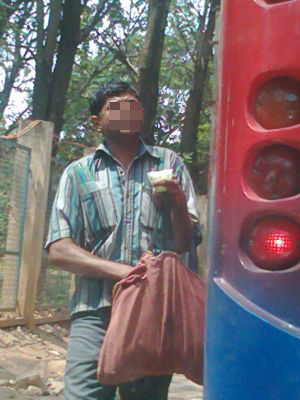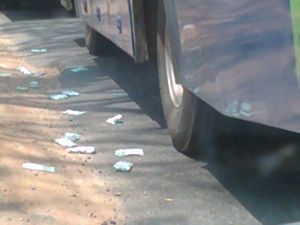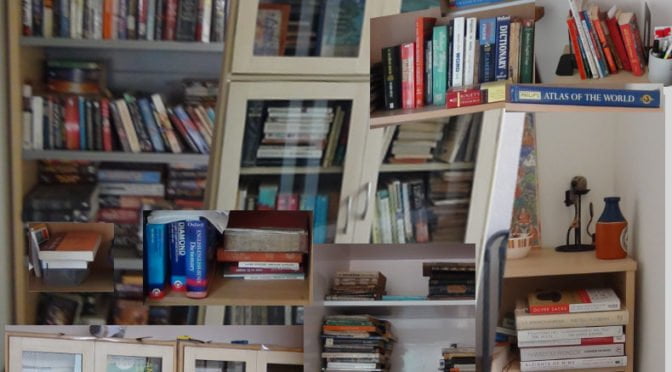Everyone likes to look at beautiful things, and most people (men and women) assume that the best compliment to give to a woman is that she is beautiful. Other than when a person is downright-unbeautiful, people give such compliments. I consider this norm not just irrelevant but also somewhat shallow when given unsincerely, as a sort of knee-jerk reaction. It rarely involves noting the person’s expression or mood or character or actions. It’s just a token.
As a child I was distinctly unbeautiful (as per the ruling conventions). (Still am, but it no longer matters to me).
Persons who wanted to compliment me (on my looks, because when it comes to girls, that is what matters), would be stumped about what to say. They would, instead, dole out advice on how I could become beautiful. Daily facepacks with gram flour and cream and lemon? Avoid the sun? Clean the face with milk every night? Get multani mitti and rosewater? And since they couldn’t say I was beautiful (there’s a limit to believable lies), they twisted their compliments to imply that my beautiful persona was just around the corner if I kept rubbing lemons on the face a few more decades, please. She’s fairer now, they’d tell my mother after squinting to inspect me. She’s getting fairer.
Beauty = success = opportunities is deeply ingrained in all strata. It emerges at strange moments at unexpected quarters. When in my final year of MBA (at IIM Ahmedabad), just before job placements, we were sitting in the dining hall, a group of girls from our batch, chatting about jobs, when one of them suddenly turned to me, deep concern in her voice. “But what will you do, Swapna! Where will you get a job! You are not beautiful!” The other girls laughed in an embarrassed way, but it was clear that the classmate who had blurted out the sentence genuinely saw my lack of beauty as a major handicap. She considered herself beautiful, and though my grades were well ahead of hers, she pitied me and genuinely worried about poor little me, doomed because unbeautiful. I don’t think our male classmates had similar exchanges/ episodes/ concerns.
Complimenting a woman on her beauty is considered the right thing to do. Not being able to call a woman beautiful makes interactions clumsy. Even social media abounds with such conventions. When a woman posts a picture, “friends” rush to gush there with a “like” and a “You look beautiful”, or even “You’ve always been beautiful” or “You were the most beautiful girl in school and you haven’t changed a bit.” (Of course, there may be some implied return “like” or compliment math involved).
I think calling someone beautiful, is a bit of a short-cut to giving a compliment that seems socially required. The trite “you look beautiful” can possibly be typed without looking, it is so standard a phrase. “Friends” may even have keyboard shortcuts to paste that whenever they see a new photograph (of a female) posted online. I can think of many other words that show a higher degree of observation/ personalized attention: happy, joyous, radiant, energetic, determined, active. There may be descriptive phrases–your smile warmed my heart, your eyes are sparkling with energy. Sound mushy, eh? But perhaps “you look beautiful” is so desensitized (and socially empty) it no longer sounds mushy.
Anyway, there is a limit to what one can say of a person based on a photograph that shows a mug-shot, no action, no context, just a camera-facing pose.
When we write stories, a standard writing-craft instruction is to avoid words like this. Focus on characteristics that actually tell us about a person rather than use sweeping and common words like beautiful, we are told. Tell us about their expression, their mood, their actions. Calling someone nice or beautiful tell the readers nothing about what matters to the person, say the books. Even describing their complexion or hair does not help readers feel involved with the character. I think the advice is relevant even in interactions.
I’ve noticed that some people who give compliments on beauty mention seeing the person’s inner beauty in a photo, but the only word they use again is “beauty.” That really puzzles me. What is inner beauty? Is it more in someone who is fair, has a straighter nose? Is it more visible when you wear an expensive Kanjeevaram saree? When you dye your hair or get them set by a stylist? Is it less in people beyond the help of better lighting and Photoshop filters and airbrushing? Is it less if you have wrinkles? Or, if you are working in the elder care sector, is it more if you have wrinkles?
And here I was, naive me, assuming that inner beauty was about character and ability to love and feel for others, and about behavior and how a person responds to situations and persons 🙁
More important, should the non- beautiful persons to be considered undesirable/ bad/ lacking inner beauty?
This equating/ correlating of beauty with goodness is recognized as a root for peer pressure, isolation, bullying, inferiority complexes, disorders like anorexia and bulimia. Yet even persons who talk against environments of objectification or pressure often resort to (probably without realizing it) the knee-jerk “you are beautiful” response when they feel it is expected/ wanted.
This post got triggered by the fact that yesterday, I saw the “every woman must see these” Dove ads on “Real Beauty Sketches” and I was extremely uncomfortable. Everyone seemed to go gaga over the video, as if watching it would liberate every woman who had not known how beautiful she was.
I agree it can’t be nice to think you look bad, but surely the answer is to see that looks are not so important an aspect as to get you down? Is it really liberating and empowering to know that your nose is straighter than you thought it was?
Fact is, howsover they are packaged, these are advertisements, folks, by a company making beauty products– naturally they perpetrate the impression that a woman must think of herself (or “know” herself) as beautiful. I was relieved to see I was not alone in my discomfort when I chanced upon this post Why Dove’s “Real Beauty Sketches” Video Makes Me Uncomfortable… and Kind of Makes Me Angry.
Methinks that this social focus on beauty is a gone-awry mechanism. Evolution-wise, we are designed to note wholeness and symmetry and some other characteristics as desirable because they are usually indicative of better health and hence, better survival. But hey folks, we are far beyond those caveman survival days. In our times and context, we don’t need to evaluate everyone as a potential mate who will bear us healthy offspring that can outrun the tiger or hunt the dear or climb trees or till the lands all day long.
Here’s my suggestion: Next time, before you call someone beautiful, or before you want to be called beautiful, please pause. See if you are forgetting to notice the person as a person. See if you are looking at relevant characteristic/ skills for the context at hand. Consider whether your “compliment” can hurt/ put pressure on other persons who feel inferior because they don’t fit. And then check if you still want to comment on beauty, or whether you are ready to find something more individualistic to compliment them on.
And while you are at it, here’s another thought: would you rather spend three hours in a café with a beautiful person whose sole claim to compliments is their beauty? Or would you rather spend time with someone interesting, warm, genuine, energetic, cheerful or whatever, even if their nose is crooked and chin weak and they have a few warts under their eyes?
Maybe calling someone beautiful is not a compliment after all. Maybe there are better compliments to consider.
[Edited to add: I created this post to share my concern at how women and beauty and being good are too tightly interwoven in many social interactions, and how we can consider separating them. The post was written as a reaction, and in a hurry, and in retrospect I see some points I would argue differently if I rewrote it. I’d also probably have focused more on the consequences of this overemphasis on “beauty” on increasing number of persons with body image challenges, an aspect I mentioned but did not pursue. But there are enough articles and posts on such topics, anyway. ]











 I must admit that, though my actions probably bode well for trees, for my wallet, and also my back (which protested all that dusting and lifting), I miss paper books–the smell, the feel, the weight, the physical satisfaction of turning pages–and as I don’t want to buy more paper books, I find myself standing in front of my bookshelves and easing out an old favorite to savor. It’s fun in a way, like meeting old friends and finding I still love them.
I must admit that, though my actions probably bode well for trees, for my wallet, and also my back (which protested all that dusting and lifting), I miss paper books–the smell, the feel, the weight, the physical satisfaction of turning pages–and as I don’t want to buy more paper books, I find myself standing in front of my bookshelves and easing out an old favorite to savor. It’s fun in a way, like meeting old friends and finding I still love them.